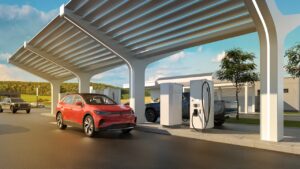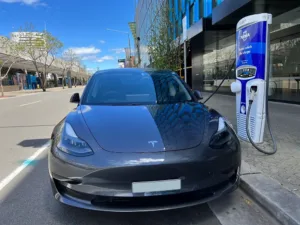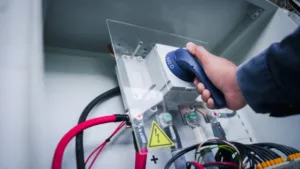Guide On How To Charge Your Electric Car With Charging Stations
Electric automobiles (EVs) as well as plug-in hybrid cars are new to the market, and their use of electricity to propel themselves is a sign that an entirely new infrastructure has been established that is not familiar with. This is the reason we developed this guide to describe and clarify the various charging options that are used for charging electric vehicles.
This EV charging guides, be able to learn more about the three places that you can charge, the 3 types of charging that are accessible across North America, fast charging by superchargers, charging times and connectors. Additionally, you’ll find a crucial utility for charging at public places as well as useful websites to answer your queries.
1.) Home charging
2.) Public charge
3.) Working from home and charging
Before we can get into these concepts, it’s helpful to be aware of the different phrases used to describe charging stations. They generally all refer to the similar issue.
- Charging station
- Outlet for charging
- Charging plug
- Charging port
- Charger
- EVSE (Electric Vehicle Supply Equipment)
Share this guide on facebook or twitter and spread the knowledge!
Electric Car Home Chargers
The charging of an electric vehicle or plug-in hybrid is typically carried out at home.Home charging is responsible for the majority of charging performed by electric vehicle drivers. This is the reason it’s crucial to be aware of the different options that are available, as well as the pros and cons of each.
Home Charging Solutions: Level 1 & Level 2
There are two kinds in home charging: level 1 charging and level 2 charging.
- Level 1.charging takes place when you charge your electric motor vehicle (EV) with the charger supplied in the vehicle. The chargers are plugged through one end to any regular 120V outlet, and the other end plugged directly to the vehicle. It is capable of charging 200 km (124 miles) within 20 hours.
- Level 2chargers are available in separate from cars, however they’re usually bought at the same time. They require a more complex configuration, since they plug to a power outlet of 240V that permits charging between 3 and 7 times faster based on the electric vehicle and charger. The chargers all have an SAE J1772 connection and can be purchased for online purchases in Canada as well as the USA. They are usually fitted by an electrician.
For each electric vehicle and plug-in hybrid vehicle, use of a home level 2 charging station is suggested to allow you to charge more quickly and fully enjoy your electric vehicle’s potential. Municipal and provincial incentives are available in certain regions to help you pay for purchasing and installation costs. Check the sites below for more details.
- Quebec incentives for electric car home chargers
- British Columbia incentives for electric home-chargers for cars(the scheme is currently suspended)
- In for the United States, we suggest you go to the government’s website.
The advantages of home-based charging
To reap the full advantages of charging at home, it is essential to make use of a home level 2 charger.
The battery will be fully charged can be recharged in only a couple of hours
Level 2 chargers allow the charging of your electric vehicle up to 7 more times quicker for fully electric vehicle, or 3 times quicker for plug-in hybrids when compared with a level 1 charger. This means that you’ll have the ability to maximize the usage of your electric vehicle and minimize the number of stops you have to make at charging stations in public.
It can take about an hour to charge fully a 30 kWh batteries (standard battery for electric vehicles) This will allow you to get the most of your electric vehicle, especially when you only have a short time to charge it.
Start Your Day Fully Charged
Home charging typically happens in the evenings and late at evening. Simply connect your charger to the electric car after you return from work and you’ll be fully charged the next day. In most cases the battery’s range is sufficient for all of your travel needs, which means that you won’t need to go to public chargers to charge. When you’re at home, the electric car is charging while you have dinner, play with the kids, catch up on TV and rest!
Save Big on Charging Costs
Another benefit of charging at home is the cost-effectiveness of electricity for residential use compared to the costs of charging stations, as well as the cost of gasoline.
- In Quebec the charge is around 30% cheaper to charge your home device as opposed to charging at a public outlet and six times cheaper to travel 100 kilometers (62 miles) using electricity than gas.
- In Ontario the province, it’s about 65 percent cheaper to charge your device at home than charging at a public outlet and 5 times more affordable to travel 100km (62 miles) with electricity than gas.
- For British Columbia, it is about 30% cheaper to charge at home rather than charging at a public outlet and five times cheaper to travel 100 km (62 miles) with electricity than gas.
- For the United States, it all is dependent on the cost of gas and electricity. It is important to assess the electricity consumption in kWh/100 miles of an electric vehicle multiplied by cost of kWh. what is consumed in gallons per 100 miles of the gasoline car multiplied by the cost of gas per gallon. This way, you’ll be able to determine quickly the amount you can save on travel costs.
Electric Car Public Charging Stations
Public charging enables the owners of electric vehicles the ability to recharge their vehicles in the roadway when they require more distances than is permitted by the autonomy of their electric vehicle. The public chargers are typically found near eateries, malls, parking spots and similar public spaces.
To find them quickly To locate them, we recommend using ChargeHub’s map of charging stations that is available for iOS, Android, and web browsers. The map allows you to easily locate every charging point in North America. It also lets you see the majority of chargers their status in real-time as well as make itineraries and much more. We’ll use our map to explain how public charging process works.
There are three aspects to be aware of about charging publically The three levels of charging, and the distinction between the connectors and charging networks.
Charging Levels
Charging Station Connectors
Charging Station Networks
Which Levels of Charging Are Available for Public Charging?
There are three charging levels for charging electric vehicles. All electric vehicles can be charged by using levels 1 and 2 stations. These types of chargers have the same amount of power for charging like the ones you set up at your house. Level 3 chargers – often known as DCFC (or fast charging stations) are more efficient than levels one and two stations which means they can charge your EV more quickly with these chargers. That being said, certain vehicles are not able to charge with Level 3 chargers. Knowing the capabilities of your vehicle is, therefore, crucial.
Charging Level Summary
Level | ChargeHub | Power (kW) | Approximate Charging Time (Empty Battery) |
1 |
| 1 | 200km (124 miles) +20 hours /20 hours 20 hours |
2 |
| 3 to 20 typically 3 to 20 typically | 200km (124 miles) ++/- 5 hours |
3 (DCFC) |
| Usually 50, occasionally 20 | 80 percent from 200km (124 miles) ++/- 30 minutes |
Level 1 Public Chargers
The Level 1 outlet is the basic wall outlet with 120 voltages. This is the slowest charge level, and takes several hours to fully charge a completely electric vehicle, or several hours for plug-in hybrids.
Level 2 Public Chargers
level 2 represents the standard EV plug that is found in homes and garages. The majority of charging stations in public are Level 2. The RV connectors (14-50) may also be regarded as level 2 chargers.
Level 3 Public Chargers
Finally, some stations can be classified as charging at level 3, often referred to as DCFC as well as DC Fast Chargers. These charging stations are the fastest method of charging a car. Be aware that not all EV can be charged at the level 3 chargers.
Choosing the Right Level of Public Charging for Your Electric Car
The first thing to do is suggest you stay clear of charging stations that are level 1. They’re slow and not designed to the needs of EV drivers while travelling. If you’re looking to charge in the quickest manner, you must utilize the level 3 charger because these charging stations give a large amount of distance to your EV in a relatively short time. But the charging process at the DCFC station is only efficient in the event that your battery’s current state-of-charge (SOC) is lower than the 80% mark. Once that is reached the charging rate will decrease considerably. So, when you’ve reached 80percent of your charge it is recommended to connect your vehicle to an EV charger that is level 2, because the final 20 percent of your charging is faster with the level 2 charger as one that is level 3. However, it’s a lot cheaper. You could also continue on your journey and recharge you EV up to an 80% charge by your next charger of level 3. that you encounter while driving. If time isn’t an issue and you plan to stay for a long time in a charging station, you ought to consider an EV charger that is level 2, which is slower but more costly.
Which Connectors Are Available for Public Charging?
Level 1 and 2 Connectors
The most popular connection is known as that of the SAE J1772 EV plug. Electric cars of all kinds are available in Canada and the US can be charged using this plug, including Tesla automobiles since they have an adapter. J1772 is a J1772 connector is only used for charging levels 1 and 2.
Level 3 Connectors
To charge quickly for fast charging, it is recommended to use the CHAdeMO or SAE Combo (also known as CCS in reference to “Combo Charging System”) are the most frequently used connectors by manufacturers of electric vehicles.
The two connectors aren’t interchangeable, which means that a vehicle equipped with a CHAdeMO port is not able to charge with the SAE Combo plug and vice reverse. It’s like gasoline vehicles that are unable to refill at an diesel pump.
The third connector that is important is that is used by Teslas. This connector is found for level 2 and level 3. Supercharger Tesla charging stations, and is exclusive to Tesla cars.
Connector types
Connector:Port J1772
Level: 2
Compatible:100% of electric automobiles
TeslaWith adapter
Connector:CHAdeMO
Level: 3
Support:Check specifications of your EV
TeslaWith adapter
Connector: SAE Combo CCS
Level: 3
Support:Check specifications of your EV
Tesla:No
Connector:Tesla HPWC
Level: 2
Compatibility:Only Tesla
Tesla:Yes
Connector: Tesla supercharger
Level: 3
Compatibility:Only Tesla
Tesla:Yes
Wall Plugs
Wall Plug:Nema 515, Nema 520
Level: 1
Compatible:100% of electric cars, Charger is needed
Connector: Nema 1450 (RV plug)
Level: 2
Support:100% of electric automobiles, Charger is required
Connector:Nema 6-50
Level: 2
Support:100% of electric automobiles, charger is required
Prior to driving to a charging station it is essential to check the compatibility of your vehicle with the available connectors. This is crucial for DCFC stations that are not Tesla. Some might have only an CHAdeMO connector, while others have a SAE Combo CCS connector, while others may include both. Additionally, certain automobiles, like those with the Chevrolet Volt – a plug-in hybrid electric vehicle, are not compatible with level 3 stations. Be aware of the compatibility of your vehicle prior to planning your next trip. By using the help of our charge map that you can use, you’ll be able apply the correct filters to display chargers that are compatible with your electric vehicle.
Electric Car Charging Station Network Operators
To properly utilize public chargers, it is necessary to need to know the charging networks that are in use in your region. There are numerous charging providers in Canada as well as the United States. The majority of them are confined to particular areas, but there may be a variety of them within the same location. There are two kinds of network operators for stations:
Networked Smart Charging Stations
To make use of networked chargers or smart charging stations, as well as connected stations need to sign up to the network. Most of the time, registration is completely free and the charges only are charged when you utilize their chargers, however some can be used for free. You’ll require the RFID card or mobile app from the network to be able to activate and then use the charger.
Independent Public Charging Stations
Public charging stations are set up by local companies or people who wish to make charging possible on their property. You don’t need to be part of a community to access these chargers. Certain conditions might be applicable to certain chargers.
Charging an Electric Car at Work
Workplace charging functions similarly with home charge. It is offered by the employer to employees. Employees therefore can access parking spaces that have level 2 or 1 charging stations throughout the daytime. In accordance with your routine working from home, charging your phone at work can be sufficient to power your entire journey.
The benefits of workplace charging
A longer electric range
When paired with home charging office charging can increase your power usage. This is especially relevant in plug-in hybrids because you can make use of the electric motor to cover longer distances, and thus reduce the cost of fuel.
level 2 charging lets you charge more quickly which is particularly appealing for part-time employees, or work environments where employees aren’t working all day.
Large Savings on Transportation Costs
The costs for electricity associated with workplace charging are typically borne by employers, meaning that employees are able to charge their devices at work for no cost. In other situations employers charge costs to use the charger, however the price is typically lower that charging a charging station in the public.
Government Incentives for Workplace Chargers
To help employers to set up charging stations for employees, a number of governments have implemented programs that cut down on the purchase and installation costs, as with other benefits for employers. But the majority of employers are unaware of the existence of these programs and it is upon the shoulders of curious employees to speak to them about the program.
- Quebec incentives for electric car home chargers
- British Columbia incentives for electric home-chargers for cars(the programme is suspended temporarily)
- In for the United States, we suggest you go to the government’s website.
Now that you are more familiar with all types of charging for an electric car or plug-in hybrid, we suggest you read our guide on how to choose your level 2 home charger. Since 80% of your charging will be done at home, it’s really important to choose a charging station that answers your needs.
HOW TO CHOOSE THE RIGHT CHARGER?
Did you find this content useful? Share it with your friends who may want to find out more on how to charge an EV.





